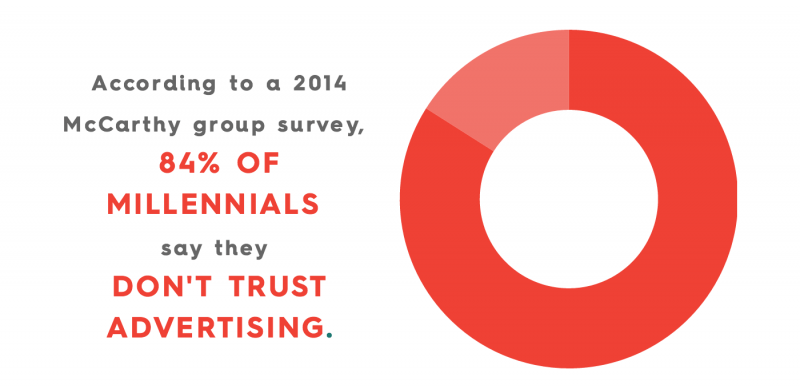
Undeniably, the success of many popular brands comes from Interruption Marketing, such as Coca-Cola or Nikes. However, most of the remaining brands are still struggling to find attention, with huge advertising budgets each year.
For most people, this classic marketing model doesn’t work very well. When the product itself is not really attractive, or a start-up with low awareness, intermittent marketing can hardly save the situation. Interactive marketing is the card that helps to reverse the situation.
Pitfalls of Intermittent Marketing
The relationship between brands and consumers has changed drastically since the heyday of Mad Men . The traditional method of intermittent marketing with large amounts of non-stop advertising, sales or promotional information used to be the only option. This is a one-way communication model that focuses on persuasion.
Brands attract by putting pressure on consumers. It is undeniable that this method used to be very effective, mainly due to the limited communication channels at that time, mostly TV, radio and printed newspapers.
Since then, humanity has witnessed dramatic changes in technology, communication, social attitudes, and even demographics.
Consumers now have the power to choose both content and how it is received. Millennials, who make up the majority of the workforce, are the group that is driving this trend the most.

According to a 2014 McCarthy group survey, 84% of Millennials say they don’t believe in advertising
The deep problem lies in the outdated communication methods of brands: approaching customers, trying to persuade to buy in a rush. Millennials want their time and wisdom respected. This generation craves connection, exchange and self-experience. Intermittent marketing is not what they want, interaction is the key.
Era of Interactive Marketing
Applying interactive marketing helps to regulate the relationship between brands and consumers. This strategy means interacting to bring value to customers. The foundation of a relationship is based on mutual respect, trust and understanding.
Let customers become part of the brand story . In interactive marketing, content is very important. Because in addition to the one-on-one consultation method, interactive content on social and digital platforms is extremely popular.
Consumers need content

In the midst of a sea of information like today, the public is extremely difficult to choose how they will receive content. They often target content that serves their needs and purposes. Providing this type of content helps brands deliver value to customers.
Consumers actively choose to interact

Millennials don’t want coercion, they will actively interact with the brand, if they want to. With a strong brand voice and message , users will naturally find you. The more interactive the content, the greater the likelihood of public support.
According to a NewsCreed survey, 62% of Millennials say that online content drives brand loyalty .
Consumers need transparency

Living in a “hyper-connected” society, the public wants to know exactly who they are interacting with. There will be no chance for an anonymous business with an unauthenticated message.
Let’s for a great purpose don’t just look at profit

Millennials are highly valued. They want to know exactly what the brand they choose to buy is supporting and believing. The 2015 Millennial Branding survey indicated that 75% of respondents found it extremely important for businesses to contribute to society instead of just making a profit.
This is especially important because consumers believe that the brand they choose reflects their personal identity. Online content is a great opportunity to provide background information about the brand (vision, mission, values).
With all of the above, interactive marketing is the most powerful tool for building customer relationships – but only if brands know how to deploy content correctly.
5 ways to help build an effective interactive marketing strategy
Focus on both quality and quantity:
Interactive marketing needs to maintain a steady source of content. A single publication does not turn the tide. Brands need a steady, quality team to create content that is properly distributed to optimize content. Make sure your team includes enough: content strategists, production staff (editors, designers, programmers, …), distribution staff, SEO.
Anyone can create content:
While the Marketing team will be in charge of the content, ideas shouldn’t come from just one source. All personnel from finance, sales, … should hone their knowledge and turn them into valuable content.
Experiment with new technologies and tools:
Technology has ushered in and fueled the era of interactive marketing. Any platform that makes content easily accessible to customers is a huge help.
Process optimization:
Interactive marketing is like a race. The goal of the brand is to increase both quality and efficiency in quick time. Be open to new strategies to find your way. Complacency and compromise are what inhibit growth.
Read more articles on Marketing at Malu ‘s blog
Reference source : https://www.columnfivemedia.com/why-engagement-marketing-matters/
Read more >>> What is Performance Marketing? Why businesses pour money into Performance Marketing




